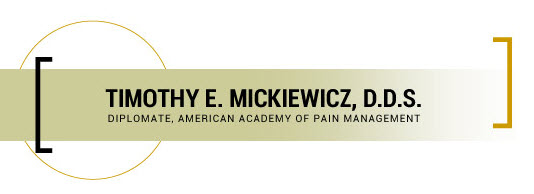
TMJ disorder (temporomandibular joint disorder) can be difficult to diagnose, but many dentists understand what to look for in patients who experience jaw problems. The key to getting a proper diagnosis is choosing an experienced dentist who specializes in complex dental issues.
During an appointment to diagnose TMJD, a dentist asks about the patient’s symptoms, examines the jaw, face, neck, and head, reviews the patient’s medical and dental history, and uses different imaging tests. These findings and the elimination of other medical conditions can help dentists make the proper diagnosis.
So, what exactly is TMJ disorder? Our Sacramento dentist explains that in this detailed blog.
The Basics of TMJ Disorder
The temporomandibular joints are often referred to as the two most complex joints in the body. They attach the mandible, or lower jaw, to the temporal bone. Between these joints are two small, soft disks that absorb the shock from chewing and other movements. To feel your temporomandibular joints, place your fingers in front of the ears and open and close your mouth.
When TMJs work properly, the jaw moves smoothly up and down and side to side. These functions become more difficult and possibly even painful when something isn’t right.
Trauma is one of the most common causes of TMJ disorder, but it is not the only one. Other factors that contribute to TMJ disorder include:
- Teeth grinding
- Arthritis
- Birth defects
- Poor posture
- Joint erosion
- Braces
- Prolonged stress
Symptoms of TMJ Disorder
The symptoms of temporomandibular joint disorder are painful and disruptive—two of many reasons seeking treatment is so important.
Here are the most common signs of TMJ disorder:
- Radiating jaw, face, and neck pain
- Chronic headaches
- Tinnitus
- Stiffness in the jaw
- Limited jaw movement
- Lockjaw
- Popping or clicking while chewing
- Numbness or tingling in the limbs
If you or a loved one is experiencing one or more of these symptoms, schedule an appointment with your local dentist as soon as possible. For those living in or near Sacramento, Dr. Timothy Mickiewicz is the clear choice.
Proven Treatments from Our Sacramento Dentist
Dr. Timothy Mickiewicz has dedicated himself to finding conservative treatments for TMJ disorder and other chronic health issues, like sleep apnea. These conservative therapies have proven to be successful and have earned him the title of “The Face of TMJ Therapy” by Sacramento Magazine.
Here are our most successful TMJ disorder treatments:
- Oral appliances: Also referred to as bite plates, oral appliances guard the teeth against bruxism and jaw clenching and reduce the negative effects of TMJD.
- Trigger Point Injections (TPI): A treatment that alleviates pain by injecting saline, local anesthesia, or corticosteroids into the targeted muscles.
- Physical therapy: A trained therapist will help patients focus on the muscle and joint movements in the jaw so that the muscles strengthen and relax.
- Medication: Muscle relaxants and antidepressants may be recommended for treating underlying causes, easing symptoms of TMJD, and to be used in conjunction with other treatment methods.
Our treatment methods enable patients to achieve optimal oral health, better overall health, and pain-free lives. Dr. Mick works with every patient who suffers from TMJD to create a personalized treatment plan that produces results.
To experience TMJD relief, contact our office today at (916) 469-9178 to schedule an initial consultation.


